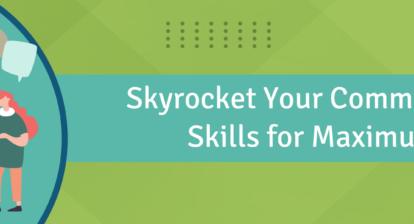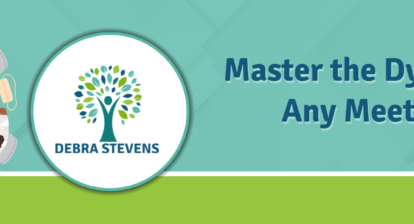
Navigating the complex world of professional meetings can sometimes feel akin to navigating a maze. Every turn seems to present a new challenge, whether it’s an aspiring leader trying to convince their team of a new strategy, a sales professional attempting to seal the deal, or a decision-maker seeking consensus on a pivotal move. At the heart of these interactions lies the art of persuasion. As the experts at Debra Stevens Training & Coaching, we’re keen to share some transformative strategies to amplify your persuasive prowess.
1. Active Listening is Your First Step:
Contrary to popular belief, persuasion doesn’t begin when you open your mouth; it begins when you open your ears. Active listening forms the cornerstone of effective persuasion. By attuning yourself to the other person’s needs, objections, or desires, you can craft a message that resonates deeply with them. It’s not about pushing your ideas, but rather aligning them with what your listener seeks or values.
2. The Power of Narratives:
Data might provide evidence, but stories instil emotion. We’re hardwired to remember and relate to stories. Rather than bombarding your listener with facts, intertwine these facts within a compelling narrative. Whether it’s a personal anecdote or a case study, stories create an emotional bridge, making your point memorable and influential.
3. Highlight Mutual Benefits:
If you want to persuade someone, always frame your ideas in terms of mutual benefits. Instead of a one-sided gain, show how your proposal offers advantages for both parties. This not only presents your idea in a positive light but also alleviates potential concerns of selfish motives.
4. Authenticity is Golden:
In a world saturated with polished pitches and rehearsed speeches, authenticity stands out. People gravitate towards genuine interactions, and they can easily spot when someone’s being insincere. When you speak from a place of genuine belief and sincerity, your message not only becomes convincing but also trustworthy.
5. Master the Art of Timing:
There’s a right time for everything. Your most persuasive arguments will fall on deaf ears if your listener is distracted, disinterested, or overwhelmed. Gauge the mood and receptivity of your audience. Sometimes, it’s worth waiting for a more opportune moment than pushing your point in suboptimal conditions.
6. Visual Aids to the Rescue:
A well-placed graph, image, or even a prop can significantly enhance your persuasion efforts. Visual aids help clarify complex points, keep the audience engaged, and often serve as a memory anchor, ensuring your message lingers long after the conversation ends.
Persuasion is an art honed over time, with a blend of intuition, strategy, and genuine connection. It’s not about manipulating but about forging understanding and alignment. Remember, at the end of the day, the goal is not just to be heard but to be understood and to foster mutual respect and collaboration. So, next time you find yourself in a situation that calls for a touch of persuasion, remember these golden tips. And as always, Debra Stevens Training & Coaching is here to guide you on your journey to professional excellence. Happy persuading! 🌟




